Tsf, trimark, elite, uniqlo and zara brands are using the advanced technological methods for the production of their sportswear products. An ancient soccer saying comes to mind whenever I think about the best sports brands: “form is temporary, but class is forever.” In other words, “class is more important than form.” There are ups and downs in terms of popularity, but quality and legacy are everlasting.
The key to the financial success of athletic firms is not exclusivity but rather availability. Although a limited release the nature of the Nike x OFF-WHITE collaboration might get into a lot of people’s social media feeds and provide a new level of cool to a sports brand, those sneakers do not wind up in everyone’s closets. However, even though widespread availability and visibility do translate to cold, hard revenue for sporting brands, exclusivity and collaborations continue to be a type of soft power that every label wishes they could wield.
The hype that drives the high end of the market and sends collectors and media outlets like ourselves into a frenzy is a means for sports brands to elevate their general releases and everyday wear and keep profits ticking upwards. This is done by sending collectors and media outlets like ourselves into a frenzy.

And it’s working. According to estimations provided by Statista, the global market for sports apparel earned revenue of $174 billion in 2018, which is an increase from the $167 billion recorded in 2017, and it is expected to continue expanding. Allied Market Research projects that by the year 2020, total revenue will have reached 184.6 billion dollars.
Tsf sportswear
Formed for the purpose of distributing blank goods to the expanding market in South Florida. During the course of the 1980s, Wholesale Blanks developed into one of the most successful and well-known wholesale distributors of blank goods in the South Florida region.
TSF Sportswear Inc. became the holding company’s official moniker sometime in the early 1990s. During the same time period, the printing branch of the company came into an exclusive arrangement with Guy Harvey, a well-known marine biologist and wildlife artist, with the intention of printing his artwork on various types of wearables.
TSF Sportswear and Wholesale Blanks both had remarkable growth and success throughout the decade of the 1990s, helping the company become the most successful hybrid distributorship in the Southeast. Wholesale Blanks changed its name to TSF Sportswear in the end of the 1990s and became the first Hanes brand exclusive wholesale distributorship in the United States. Wholesale Blanks was founded in 1989.
Since 2004, we have been putting all of our efforts into establishing the newly formed TSF Sportswear LLC the most successful wearables distributor in the Southeast. TSF evolved into a multi-line wholesaler during the course of the subsequent few years, during which time the company also expanded its operations to include warehouses in Puerto Rico, Alabama, Texas, and Kentucky.

We look forward to being the go-to source for all of your apparel requirements, and with many locations to assist you, we can do just that. We stock over thirty different brands, ranging from everyday t-shirts to athletic and fashionable attire as well as accessories.
The staff members at TSF Sportswear work hard to live up to and even surpass the standards set by our consumers. This is accomplished by continuously introducing fresh and innovative items while also maintaining the greatest possible level of customer care.We are honored that you have chosen TSF Sportswear as your retailer, and we look forward to serving you in the future.
Trimark Sportswear
Trimark was founded in 1975 by three individuals hailing from Markham. In 1995, Derrick Milne and his father, David Milne, who was also one of the founding partners, purchased the sportswear business and changed its name to Trimark.
Both David and Derrick Milne have called the city of Markham their home since the year 1970. Derrick was the top student in his graduating class at Markham District High School in 1978, when he earned the title of valedictorian.
After getting his MBA from Harvard University and working for 10 years in investment banking in New York and London for Morgan Stanley (Vice President) and Regency Capital, Derrick returned to Canada after spending 15 years living and working outside of Canada (Director).
Trimark Athletic Supplies was recognized as one of Canada’s 50 Best Managed Private Companies in December 1998, and it requalified for this honor in 1999 and 2000. This honor was bestowed upon Trimark Athletic Supplies in December 1998.
Trimark was recognized once more as one of Canada’s 50 Best in 2001, and it requalified for this honor in 2002. In the year 2000, Derrick was given the extremely prestigious distinction of Top 40 Under 40 for his individual accomplishments.
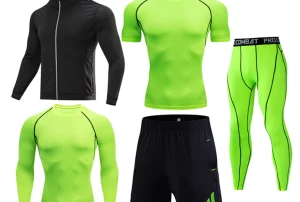
Derrick Milne established the parent firm known as Trimark Sportswear Group Inc. in the year 1999. In the United States, this new corporation has successfully completed three acquisitions. In August of 1999, Rivers End Trading Company was purchased, and in November of 1999, LA Loving and in January of 2001, Loving-Kayman was obtained. Soon after that, Stuart Campbell was brought on board at TSG to serve as the company’s Chief Operating Officer.
Elite sportswear
Elite Sportswear, L.P., the parent company of the GK Gymnastics, GK Cheer, and Dolfin Swimwear brands, reaffirms its dedication to the quality of products that are made in the United States as well as its dedication to the ongoing development of innovative designs for gymnastics, cheerleading, and swimming apparel.
GK is recognized all over the world as a market leader in the gymnastics and cheering apparel industries. The company is known for providing an exceptional level of variety, quality, fit, and customer service. Elite Sportswear items have been worn by international Olympians and World Champions for the past 35 years.
These products are distributed in over 35 different countries. GK is widely recognized as the top brand when it comes to gymnastics apparel and is often referred to as the “Choice of Champions.” GK is proud to present signature collections designed by Olympians Simone Biles and Laurie Hernandez, both of whom competed in 2016.
A manufacturer of gymnastics uniforms as well as other athletic wear and accessories, the company specializes in providing its customers with gymnastics gear. The company specializes in manufacturing leotards, warm-up apparel, workout gear, cheerleader uniforms, and hair-bows in a variety of styles, colors, and embellishment options.
In addition, the company is capable of producing sublimated prints and intricate glue and zig-zag construction, which enables its customers to obtain exact fit and high-quality gymnastics apparel according to their specifications.

Uniqlo sportswear
The Japanese retailer and brand of casual apparel known as Uniqlo has amassed a significant amount of success on a global scale. Customers keep coming back for more because of the low prices and simple designs, as well as the company’s agreements with well-known character licensors like Disney. Where did the idea for the store come from? Continue reading to discover out.
In 1984, a store known as ‘Unique Garment Warehouse’ was established in Hiroshima, Japan by a clothing manufacturer known as Ogori Shji. It was determined that the trademark would be registered under the contraction ‘Uni-Clo,’ which is derived from the part of the name that reads ‘Unique Clothing.
But in 1988, the employees responsible for registering the name misinterpreted the letter “C” as the letter “Q,” and it has remained that way ever since. After ten years from the day it first opened its doors, the shop’s name was changed to Uniqlo, and at that time, there were more than one hundred locations of the popular casual apparel store in Japan.
At the end of the 1990s, Japan was in the midst of a severe economic downturn. When it came to their clothing, Uniqlo employed a strategy known as “specialty shop of private label apparel,” or SPA for short. This strategy gave them the ability to design, manufacture, and sell their goods on their own terms.
They were also able to keep their prices low by following the lead of many of the major clothing labels and contracting the manufacturing of their products to be done in other nations. Consumers, many of whom were struggling to make ends meet at the time, responded positively to the availability of clothing that was both of high quality and reasonably priced.

Advanced sportswear
The origins of athleisure can be traced back to the long history of sportswear worn in the United States, which spanned more than a century. Today, athleisure is recognized as its own distinct trend that makes use of our culture’s emphasis on comfort as well as the technology that made it possible to develop more advanced synthetic fibers.
One hundred years ago, people wore clothes that were determined by the event they were attending. However, modern-day athleisure is for people who want a one-size-fits-all approach to their wardrobe: What can take me from running errands to working out to the gym? In a nutshell, the American fashion industry responded to the demands of consumers by becoming sports-obsessed (or at least concerned with appearing sporty), and as the fashion industry evolved, it became sports-crazed.
In the late 19th and early 20th centuries, the term “sportswear” refers to the interchangeable separates that were worn by both players and spectators at sporting events. [4] They were developed as a response to a more active lifestyle being led by women, such as riding bicycles, playing tennis, and dancing in nightclubs.
This new lifestyle inspired the development of these items. This sort of clothing typically consisted of knits or jersey and left the arms and legs open so that the wearer could move freely. Jean Patou, a prominent sportswear designer from Paris, is credited with the invention of the tennis skirt.
The tennis great Suzanne Lenglen is credited with being the first person to wear the tennis skirt to Wimbledon in 1921. Her on-court and off-court appearances in a sporty dress, cardigan, and stockings contributed to the rise in popularity of athletic wear in Europe.

According to an article in Vogue from 1926, “The sportswear subgenre accounts for three quarters of the daytime clothing options available for purchase in Paris. They are straightforward, functional, and youthful, and they form an influence that is increasingly being felt outside the sphere of action sports in dress for ordinary daytime and resort wear as well as for traveling.”
Zara sportswear
Zara is arguably the most successful fashion retail brand in the world, if not the most successful fashion retail brand overall. Zara, which was established in Spain in 1975, has been at the forefront of the “fast fashion” retail revolution ever since its inception, and the company’s mission is to instill a sense of responsible passion for fashion in a diverse range of customers who come from a variety of cultural backgrounds and age brackets.
One of Zara’s important strengths, which has played a strong role in it being a worldwide fashion giant as it is today, is its ability to put consumers first. There are numerous elements that have contributed to the success of Zara, but one of its key strengths is its ability to put customers first.
Zara is obsessed with its customers, and from the very beginning, Zara’s customers have been instrumental in defining the culture of the company and the brand.
The Zara brand features apparel for men, women, and children (under the name Zara Kids), in addition to footwear and accessories. Younger ladies and teenagers can find clothing that is more on-trend and even occasionally edgier by shopping at the Zara TRF sub-brand.

The history of the Zara brand
In 1975, Amancio Ortega and Rosala Mera established the Zara brand as a family-run enterprise in the heart of Galicia, which is located in the northern region of Spain.
Its original store sold knockoffs of well-known, more expensive brands of clothing and accessories at prices that were more affordable.

Zara was given this name by Amancio Ortega because he wanted to give her the name Zorba but it was already in use. Zara’s strategy for approaching fashion and its business model progressively gained popularity with the Spanish customer over the course of the following eight years. As a consequence of this, nine new stores were opened in some of Spain’s most populous towns.
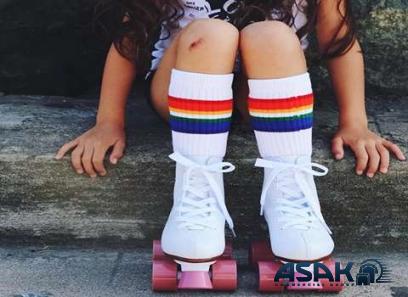
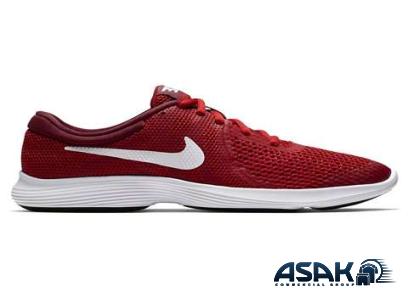


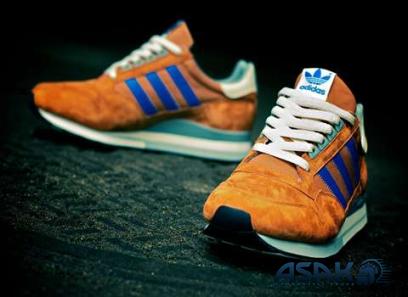




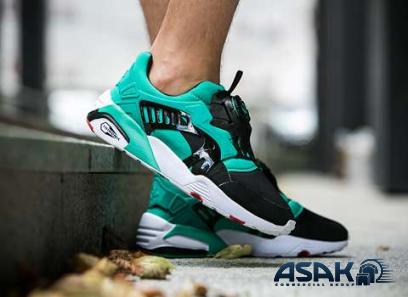
Your comment submitted.